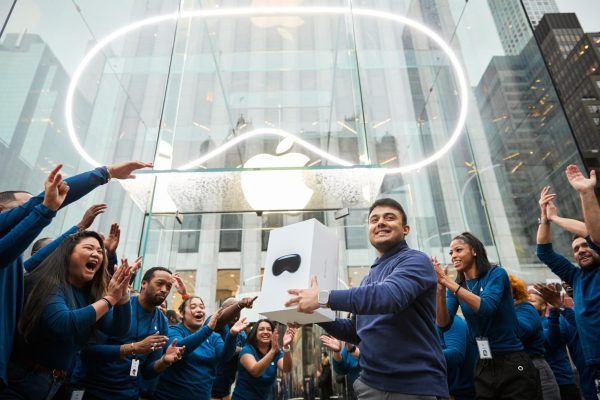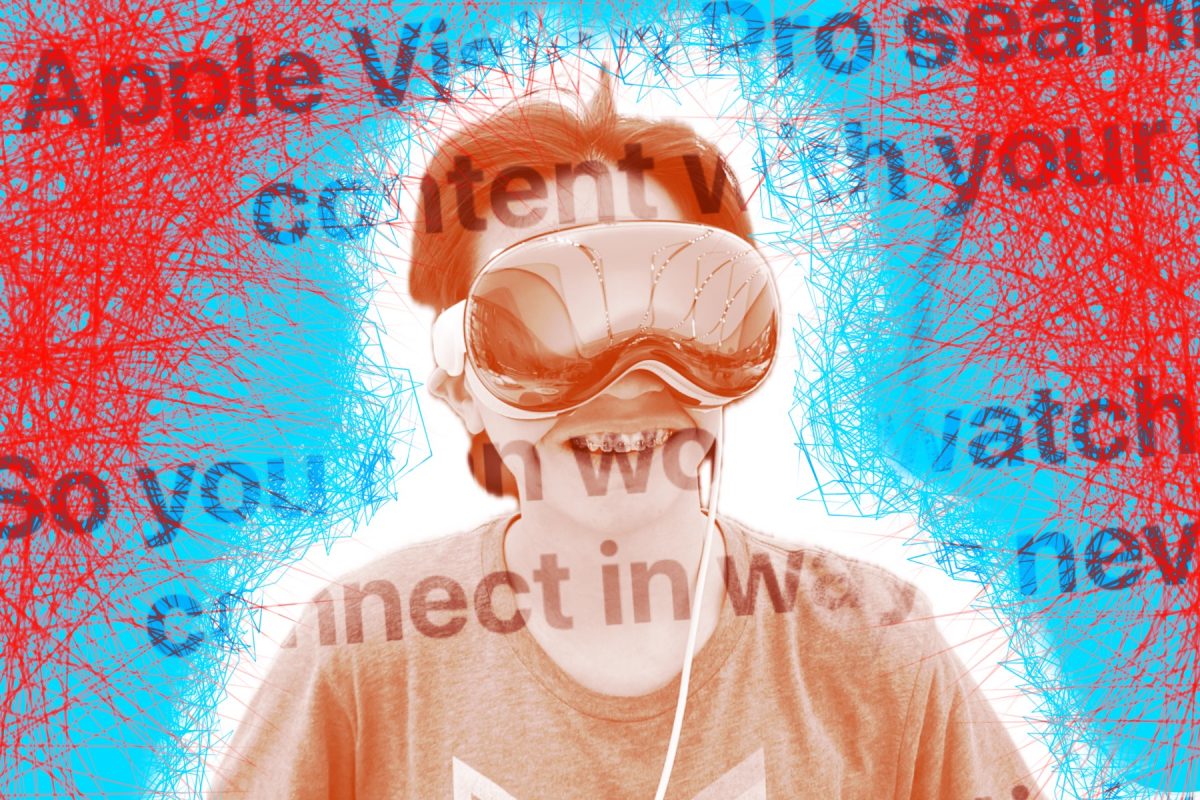Welcome to 2075. The world is burning, Dogecoin has become the official currency of the United States of Canada, Grand Theft Auto VI finally released, and Lockport Township High School Southwest Campus has decommissioned its final Chromebook, in lieu of giving the student body Apple Vision Pro headsets.
Or, at least, that’s how it’s supposed to be.
In June of 2023, Apple announced its highly anticipated (and endlessly rumored) virtual reality headset: the Apple Vision Pro. With eight cameras, two separate high resolution screens, and the contour of a black licorice jelly bean, it dazzled tech bros and Apple sheep alike. To the general public, however, this device was strange to say the least.
It was marketed as the form factor of the future, enabling “spatial computing.” No more touch screens, mice, or shame! Apps would occupy the space around the user instead of being confined to a two-dimensional display. It was the ultimate entertainment and work device – or so Apple told us it was.
It also came with a hefty price tag: $3,499 for the base model – a cost so hard to swallow, an audible cringe was made by the crowd during the device’s initial unveiling.

Upon the product’s release in February of 2024, the Apple Vision Pro was met with roughly 10 percent acclaim, and 90 percent mockery. While enthusiasts and journalists obsessed over the aluminum chassis, impressively high resolution and intuitive user interface, most sensible people pointed and laughed at the absurdity and pretentious nature of it all.
Guess which group I fell into.

Soon after the release of the Apple Vision Pro, I went to the Orland Square Mall Apple Store to demo the device. It was roughly a half hour, touring the features of the device and showing off the various apps and environments. Describing the experience makes it sound unremarkable, which it was. However, as an individual who had never tried virtual or augmented reality, it was extremely impressive.
While the displays were dimmer than I would have expected, the resolution was surprisingly high. The sound design and focus on translucent surfaces was immersive. Most notable to me, the “pinch to select” gesture combined with the eye tracking felt unnervingly natural. I blazed through the home screen at lightning speed, moved app windows around like a god reconstructing the Earth, and scrolled through Safari tabs like there was no tomorrow. Apple genuinely did a fantastic job at creating an intuitive user experience that felt not just natural, but good to use.
While I didn’t walk out of the store with a big white paper bag in hand and $3,499 mysteriously missing from my bank account, I was left astonished by the technological achievement I had just witnessed. To this day, I still hold the opinion that the Apple Vision Pro is a seriously impressive product.
Ultimately, however, the revolutionary tech of the device didn’t matter.
Apple reportedly slashed production a few months into the product’s life due to waning sales. The speculated “flood of new apps” fueled by an influx of Vision Pro users never came, and the only “killer app” of the device seems to be the somewhat useful Mac screen mirroring feature. Most importantly, it’s been forgotten by the larger culture, relegated to the neglected birch wood table in the corner of the Apple Store.
Perhaps the Apple Vision Pro was destined to be a flop due to the creep factor.
Overuse of the word “dystopia” and references to Black Mirror were a dime a dozen upon release. The sheer prospect of replacing your worldview with one augmented by a tech corporation put many off. Not to mention the eye and hand tracking technology built into the device could create a potential privacy nightmare (Apple claims they do not share eye tracking information with anyone – which is likely true – although vulnerabilities and clever ad tracking techniques could get around this). While virtual reality headsets have existed for years, the pitch behind the Apple Vision Pro made it out to be a more personal and intimate experience compared to its playful contemporaries. And intimacy inherently requires vulnerability, which many aren’t willing to commit to.
Perhaps the Apple Vision Pro was destined to be a flop due to the price.
Releasing such a costly product during an inflation-riddled economy was unbelievably bad timing. More than ever, Americans feel the need to cut back on luxury spending, with no exception given to new and experimental gadgets. It didn’t help that the Apple Vision Pro offered virtually zero compelling features which you couldn’t already use on other Apple products (Viewing photos, FaceTiming, and watching movies are all things you can do on an iPhone – why would you need a headset?).
Or consider this: Perhaps the Apple Vision Pro was destined to be a flop because it simply looked too goofy.
The Vision Pro covers half of your face, and a very human part of your face at that. The eyes are crucial for communication between humans, as they play a large role in conveying emotion. Sure, wearing sunglasses is a socially acceptable thing, but there’s a mutual understanding that the glasses are not impeding vision. With a computer strapped to one’s face, there’s simply no way for the other person to definitively know if the headset-wearer is actually looking at them (no matter how hard Apple tries with the strange eye display on the front).
This is why many have turned to smart glasses as the likelier route that virtual reality will be headed; The Meta Ray Bans have been a surprising hit among the general public. Not only are glasses socially acceptable to wear, but they’re lighter and more comfortable than a 1 ½ pound set of goggles.
Or maybe we have reached some sort of end point for computing. Phones receive increasingly incremental upgrades each coming year, AI gadgets like the Rabbit R1 have failed to seriously compete with mobile devices, and desktop & laptop computers have remained an unchanged form factor for a few decades. Everything works well. Everything makes sense. Sure, it may be boring, but I can rest easy knowing that the iPhone in my palm is more useful to me than an expensive, neck breaking toy.








